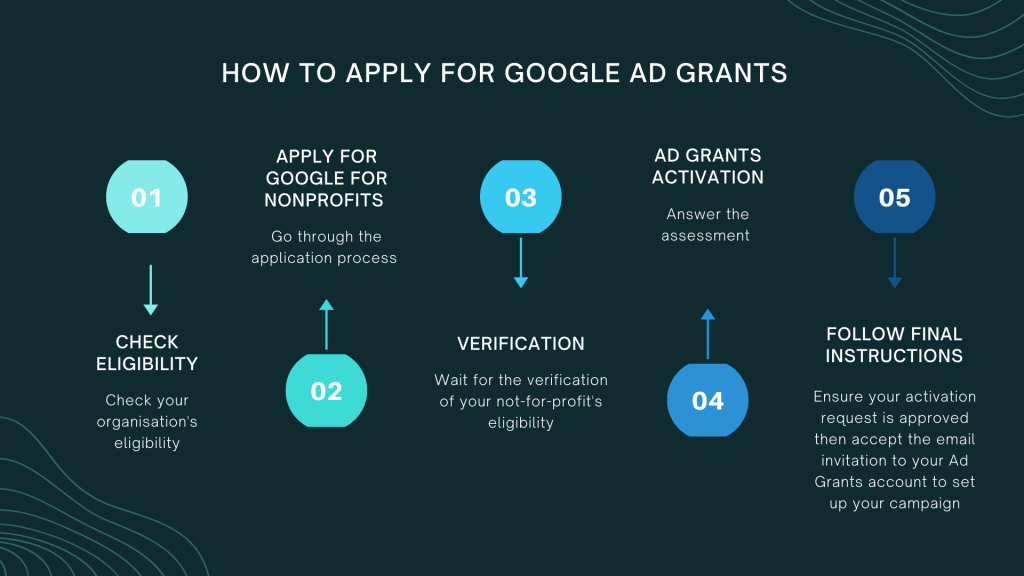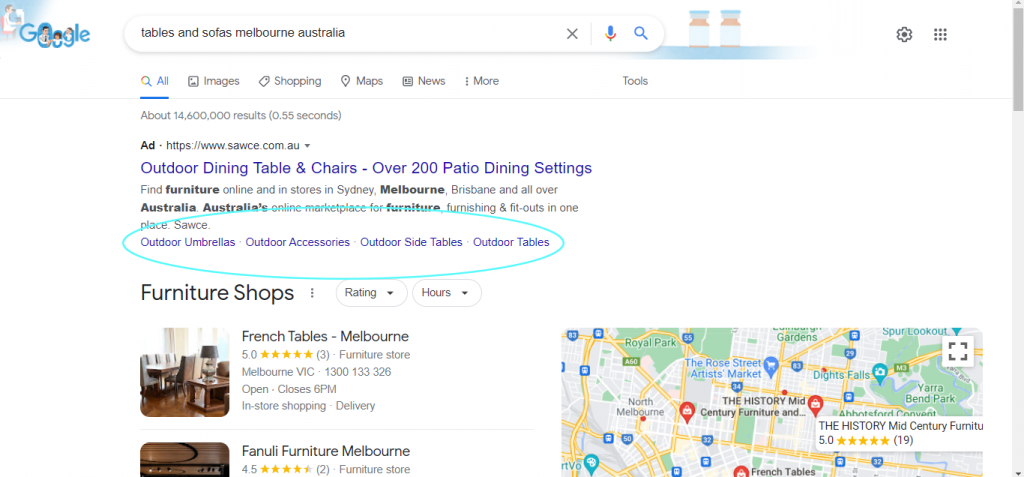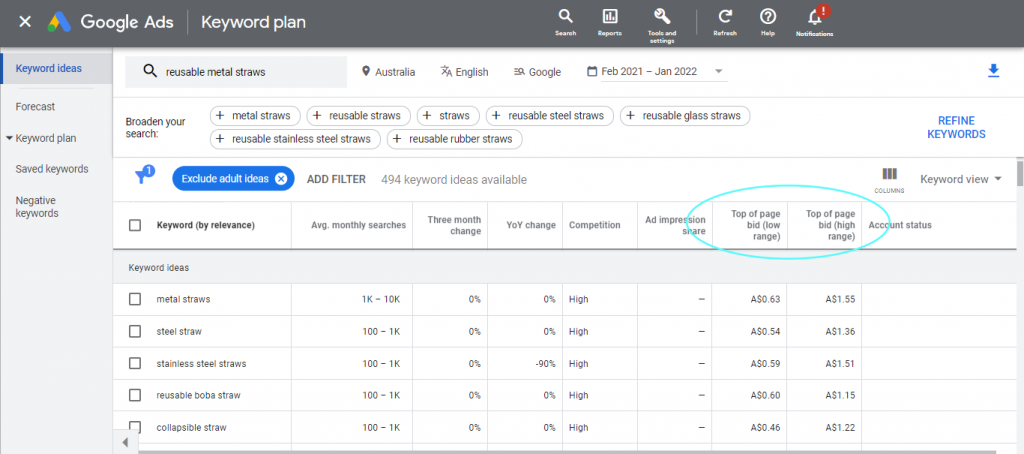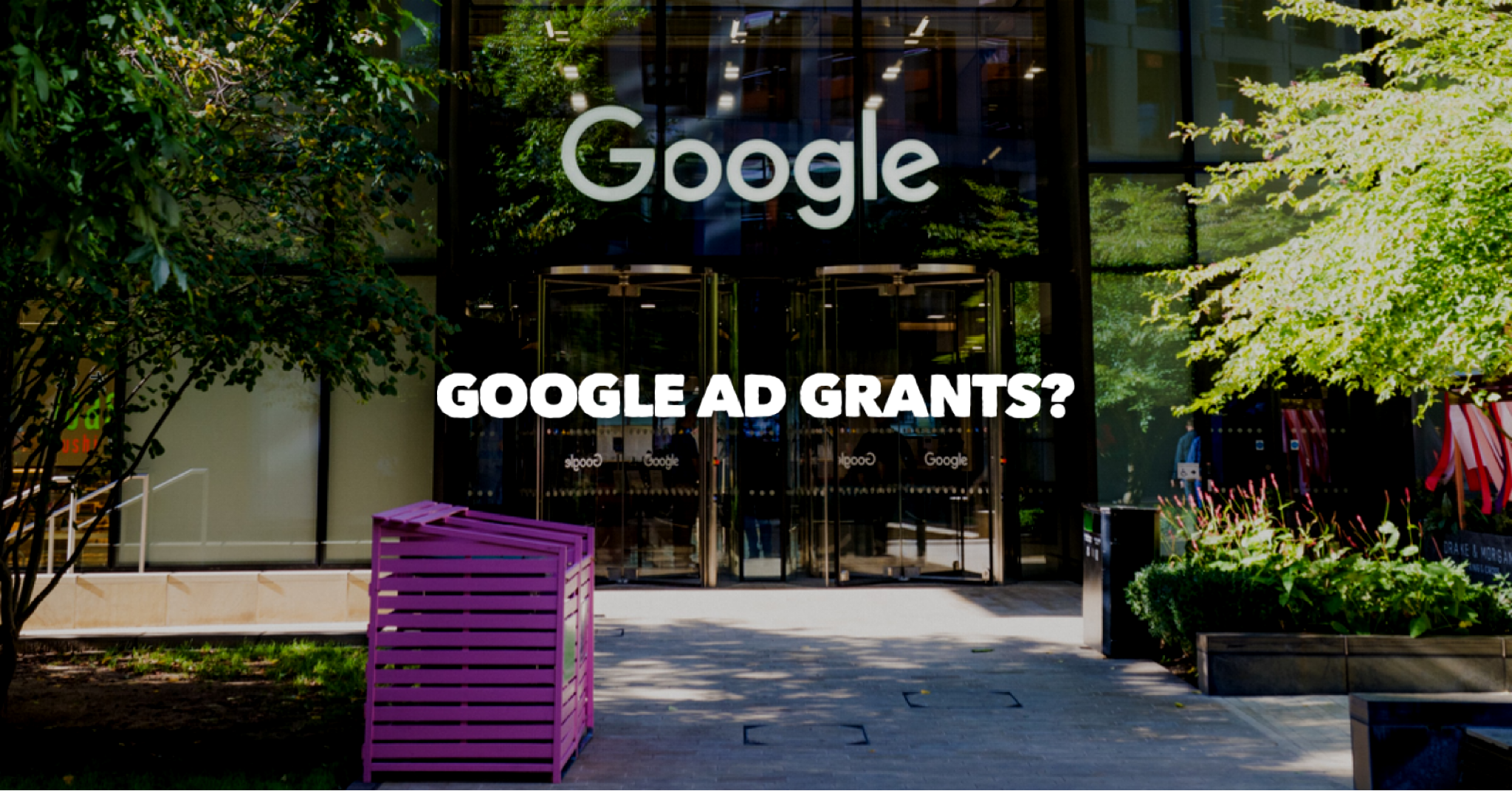It’s no secret that online advertising can be expensive.
Using Google Ads (formerly known as Google AdWords) can require nonprofits to gather large amounts of funds that might be difficult to generate.
But what if we told you that there was a way to acquire an ad budget of AU$13,000 a month for Google Ads?
You read that right! Through the Google Ad Grants program, eligible nonprofits can utilise a total of AU$156,000 yearly for ad spend.
So if you haven’t taken advantage of this incredible opportunity, this ultimate guide covers what you need to know about Google Ad Grants for nonprofits and some marketing tips to help you get started.
Google Ad Grants Defined
Google Ad Grants is a program that provides free advertising to nonprofit organisations. According to Google, the program aims to, “…help organisations extend their public service messages to a global audience in an effort to make a greater impact on the world.”
To be eligible for the Google Ad Grants program, organisations must meet certain criteria, which we will be discussing in the next section of this article.
Eligibility for Google Ad Grants
You may be eligible for Google Ad Grants if you meet the following criteria:
- Your non-profit organisation is registered with Connecting Up and holds a current and valid charity status.
- Your nonprofit acknowledges and agrees to the required certifications pertaining to receiving and using donations from the grant.
- Have a fully working website that presents thorough and sufficient information about your not-for-profit.
- Your non-profit organisation cannot request a Google Ad Grant account if it is considered as one of the following: A governmental group or association, a hospital (including health care and medical structures) or an educational institution.
Beyond these criteria, Google’s eligibility requirements for nonprofits in Australia also states that your not-for-profit should be established in Australia or in Christmas Island, Cocos (Keeling) Islands, or Norfolk Island.
Furthermore, organisations should be:
- Deductible Gift Recipients (DGRs) endorsed by the Australian Taxation Office (ATO) or listed by name in the tax law.
- Charities registered with the Australian Charities and Nonprofits Commission (ACNC).
- Income tax exempt not-for-profit organizations as defined by the ATO.
Restrictions of Google Ad Grants
There are certain restrictions that nonprofits need to know besides the criteria for eligibility, prior to getting started with advertising on Google.
Below are the restrictions to take note of:
- The budget that is granted every month is AU$13,000 with the maximum CPC (cost-per-click)being US$2.
- Only Google Search Ads (text ads) are available for grantees of Google Ad Grants.
How to Apply for Google Ad Grants
If you’re ready to use the free Google Ads that the program provides, we’ve created a quick overview of what the Google Ad Grant application process looks like. But we recommend you to read more about the steps that Google has created. Click here to get started.

Google Ad Grants Policies to Comply With
Google provides a list of policies that your non-profit organisation needs to comply with. We’ll go through all of them in this portion, except for the policies pertaining to keywords. This will be added in the next section under Relevant Ads and Relevant Keywords to better understand the policy in relation to maintaining an organisation’s Ad Grant eligibility. However, you can click this link to view all of the policies in further detail.
Garner At Least 5% Click Through Rate (CTR) Per Month
One of the key requirements for organisations under the Google Ads Grant is that they must maintain a 5% click-through rate (CTR) every month.
If your CTR falls below 5% for two consecutive months, your account will be put on hold (temporarily deactivated) and you will not be able to run any ads.
This helps ensure that the ads being displayed are generating results.
Use Conversion Tracking
Conversion tracking allows you to track how well your campaigns, keywords and ad groups are performing. The information for each level can help you:
- Determine whether or not your ads are effective
- Understand the necessary configurations to apply
When it comes to the Google Ad Grants policy on conversion tracking, Google mentions, “Accurate conversion tracking means that you are reporting at least 1 conversion per month and that if your conversion rate is high it’s accurately setup and due to strong performance of a meaningful conversion. Your total number of clicks should not nearly equate to your total number of conversions.”
Therefore, if your ads are not performing optimally, or if you haven’t achieved a single conversion, you need to determine what’s wrong. You can click here to know more about the changes to implement.
Add a Minimum of Two Sitelink Ad Extensions
Sitelink ad extensions are a great way to provide more information to your audience about your organisation.
They allow you to add links of specific web pages (such as your homepage, contact page, or about pages) to your search ads. This gives individuals a better idea of what you offer and it makes it easier for them to find what they are looking for.
Here’s what a sitelink ad extension looks like based on our article about Google Ads for Melbourne Businesses:

Create a Minimum of Two Ad Groups for Every Campaign
An ad group is a collection of ads, where each group shares a common theme.
When you create an ad group, you’ll need to choose several related keywords, which you’ll then use when creating the descriptions and headings of your ads.
By setting up two groups to house your ads for every campaign, you will be able to target your advertisements more effectively and get results that you can compare later on.
Respond to Google’s Ad Grants Program Survey
Every year, there is a program survey that must be answered by all nonprofits that were granted with the Google Ad Grants program. You can find the survey in the inbox of the email address used for the Ad Grants account. If in case you’ve completed the survey but have been notified to complete it, it just means that Google wasn’t able to attain your submission on the basis of the customer ID entered. You will then need to resubmit the survey.
Create a Minimum of Two Ads for Every Ad Group
Google requires nonprofits to have at least two ads for every ad group. This is highly beneficial as having two ads will allow you to test which one will perform better.
Take note that the Google Ad Grants policy guide also mentions that you need to set the ad rotation to Optimize.This will help your ads perform better in each individual auction.
Guidelines for Maintaining Your Google Ad Grants Eligibility
Besides the policies that Google provides, there are also several guidelines to abide by that Google has listed here. We’ll go through the guidelines and provide a short breakdown for each.
One Link for All Ads
The ads you created should be linked to the web address that was authorised during the process of applying for the Google Ad Grants program.
Google Ads Management and Maintenance
Just as advertisers maintain a Google Ads account for profit-generating companies and businesses, maintaining and managing a Google Ads account for nonprofits, are necessary as well.
In fact, Google states that you need to: (1) log in to your Google Ads account every month and (2) apply some changes to the account, where a minimum of one change per 90 days, on the basis of your account’s performance, is required.
If nonprofits fail to comply with these, Google can automatically pause or cancel your Google Ad Grant account without prior notice.
Relevant Ads and Relevant Keywords
When it comes to choosing target keywords for your nonprofit organisation, it’s important to do your research. You want to find keywords that are relevant to your mission, purpose and services or products your nonprofit offers. This way, you can reach a wider audience while abiding by the guidelines.
Take note that only keywords with a quality score that is higher than 2, are allowed to run as per Google’s guidelines on maintaining your Ad Grant’s eligibility.
Additionally, you cannot use single-keywords unless they are included in the list that Google has provided. You can click here to access the full list.
Because relevancy is important, Google also does not allow organisations to use overly generic keywords.
Lastly, all of your ads should be representative of what your organisation stands for. Google approved of your mission during the application process, so it would be contradictory if your ads presented something else.
No Commercial Advertising Allowed
The only products or services you can sell are the ones where the revenue goes to your nonprofit’s program.
Stick To Using Your Website Link
In addition to using only one link for all ads, the link you provide cannot be a link where individuals are sent to another website.
Do Not Offer Financial Products and Requests for Substantial Donations
Make sure your ads do not offer financial products or showcase requests for substantial donations. Likewise, your keywords must not represent any of these.
Do Not Display Google AdSense Ads and Other Affiliate Ad Links on Your Website
This is self-explanatory. Google does not allow you to display the two on your website.
Marketing Tips for Nonprofits
Use Keyword Research Tools
There are many free tools to use for keyword research.
One that we recommend for beginners when finding target keywords and topics is Google Trends. You can use this tool to see the top queries that are being searched for on Google. This can help you determine whether or not a particular keyword is worth targeting.
Other free tools such as Google Keyword Planner, lets you see how many people are searching for a particular keyword each month, as well as the average cost-per-click of that keyword. This information can be very helpful in deciding which keywords to target.
Here’s an example of what the Keyword Planner looks like based on our article about Google Ads for Melbourne Businesses:

When you’re choosing keywords, it’s also important to keep your audience in mind. You want to choose keywords that they are likely to search for when they are looking for information about your nonprofit organisation.
Once you have a list of potential target keywords, you can start incorporating them into your website and marketing materials. Make sure to use them in a way that is natural and relevant, so that you don’t turn off potential supporters while still following Google’s guidelines.
Allocate Your Budget for Different Ad Campaign Goals
When it comes to the Google Ad Grant, it is important to remember that you have to budget your ad spend wisely. Surely, your campaign goals could be any of the following and more:
- Recruiting volunteers
- Acquiring more investors
- Increasing the number of adoptions
- Increasing donor sign-ups
Therefore, you can’t just blow your entire budget on multiple campaigns that aren’t optimised properly.
Depending on who your intended audience is, you want to be strategic with who sees your ads in the search results. For example, if your ad is presenting volunteer opportunities, then volunteers should be your target audience and not donors.
Establish a Great Website
If you want to take full advantage of the program, it’s important that your organisation has a great website.
This means that your website must be well-designed, easy to navigate, and mobile-friendly.
In addition, make sure that your site provides the latest news and information regarding your organisation and its industry.
Don’t forget that your website should also be optimised for SEO so that potential donors, partners, investors and volunteers can easily find you online.
Be Strategic With Your Negative Keywords
The difference between negative and target keywords is that your target keywords are the keywords that you want your ad to show up on. Whereas negative keywords are the keywords you don’t want your ad to appear for.
Let’s take a further look into what we mean by this.
Assuming that your target keyword is senior dog adoption since you want to drive more adoptions for senior dogs. The relevant keyword such as should I adopt a senior dog would be your negative keyword because you don’t want your ad to show up for this.
Simply continue to sort through and find related keywords that are not relevant to what your ads are about until you build a list of negative keywords.
Accompany Paid Advertising With Other Digital Marketing Tactics
Utilising Google Ads is great but pairing it with other digital marketing efforts to raise awareness, gather more volunteers, enlist more donors and so on, will help your nonprofit to grow and succeed.
We’ve listed a few digital marketing tactics that you might like to try:
- Set up an email campaign such as a weekly newsletter for donors and partners
- Provide access to other resources for investors or donors besides the ones listed on your site
- Use social media to showcase behind the scenes footage of your organisation
- Create blog posts that are driven to improve SEO
There are many other creative measures to implement, so don’t be afraid to discover more.
Conclusion
Google Ad Grants is a great opportunity for nonprofits to reach a wider audience and attract more supporters through online advertising.
In order to maintain eligibility for the program, it’s important to remain compliant with the set of guidelines and policies provided by Google.
Nonprofits should be strategic with their target keywords and ad content, making sure that all ads are representative of what they stand for. By following these guidelines and adding other digital marketing efforts, your nonprofit can enjoy the benefits of the program and continue to allocate money to other tactics that support your cause.
If you have any questions or need help in managing your grant account, we’re always happy to help out.
Simply book a FREE session with us today!


